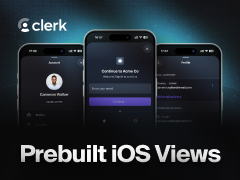By John Gruber

Clerk — Prebuilt iOS Views: drop-in authentication, profile, and user management.
Who Do You Believe, Randall Stross or Your Own Lying Eyes?
Sunday, 13 December 2009
Randall Stross is getting a lot of attention for his piece in The New York Times this weekend, titled “AT&T Takes the Blame, Even for the iPhone’s Faults”. (In the original headline, still visible in the <title> element, “faults” was “glitches”.) The gist of Stross’s piece, as you might surmise, is that AT&T’s network is not only not the worst in the U.S., but in fact is the best. Chronic iPhone problems in New York and San Francisco? Faulty iPhone hardware, which AT&T is either too polite or too afraid of Apple to state publicly.
I don’t buy it.
Is the iPhone the best phone on the market, in terms of things like signal strength and voice quality? I truly doubt it. But is it downright terrible? So bad as to explain the horrendous service iPhone customers on AT&T are seeing? Nothing in Stross’s article makes me think so:
Stross’s primary source is Paul Carter, the president of Global Wireless Solutions, a network testing firm. Carter acknowledges that AT&T is one of his company’s clients, and Verizon is not. I mean, come on.
Stross’s second source is Root Wireless, a company whose data comes from some sort of software that runs in the background on unnamed smartphones, which of course (since the software runs in the background) means the iPhone is not included.
Consumer Reports’s rankings, which put AT&T last and Verizon first, were based on actual customer surveys. Actual customers reporting their actual experiences.
If it’s the iPhone’s fault, not AT&T’s, why aren’t iPhone users around the world having the same problems as those here in the U.S.? How come iPhone carriers in Europe and Canada turned on tethering support as soon as iPhone OS 3.0 was released, and AT&T still, seven months later, has not? I’ve brought this up before and readers have argued that the U.S. is a far bigger country than those in Europe, so of course U.S. carriers have a harder job than those in Europe. But that argument doesn’t make sense to me. It’s not like there’s one single AT&T cell tower providing service for the whole country. When it comes to providing coverage for a large city like New York or London or Paris, what difference does it make how big the rest of the country is? What’s different about providing wireless service in the U.S. than Europe isn’t the densely-populated metro areas — it’s the sparsely-populated rural areas. But it’s the metro areas where the iPhone is having the severe problems. And what about Canada? Larger landmass than the U.S., tethering is available, and service quality is good.
If it’s crummy phone networking hardware in the iPhone, how come it’s still a problem in the iPhone’s third model year? If it’s Apple’s fault, wouldn’t they have addressed it by the time the 3GS hit? Stross’s implication is that Apple is an incompetent hardware maker.
If it’s the iPhone’s fault, why have iPhone/AT&T reception problems gotten worse over time? Doesn’t the correlation between the number of iPhones in use and the increase in complaints about AT&T strongly suggest the problem is network capacity?
Lastly, if AT&T’s network is just fine and it’s the iPhone’s fault, which are the phones that do get top-notch 3G data and voice service on AT&T in New York and San Francisco?
So on the one hand we have the simple theory that AT&T’s network stinks, especially in large metro areas, and extra-especially in New York City and San Francisco.
On the other hand, we have the theory that AT&T’s network is just fine because two network consulting companies say so, even though a Consumer Reports customer survey says otherwise, and it is the iPhone that is flawed, but the flaws are for some reason worse on AT&T than other carriers around the world, and just happen to be worse still in some cities than others, and Apple has been unwilling and/or unable to address these flaws in three model years.
I know which theory I’d put my money on.
| Previous: | A Liberal, Accurate Regex Pattern for Matching URLs |
| Next: | PastryKit |
